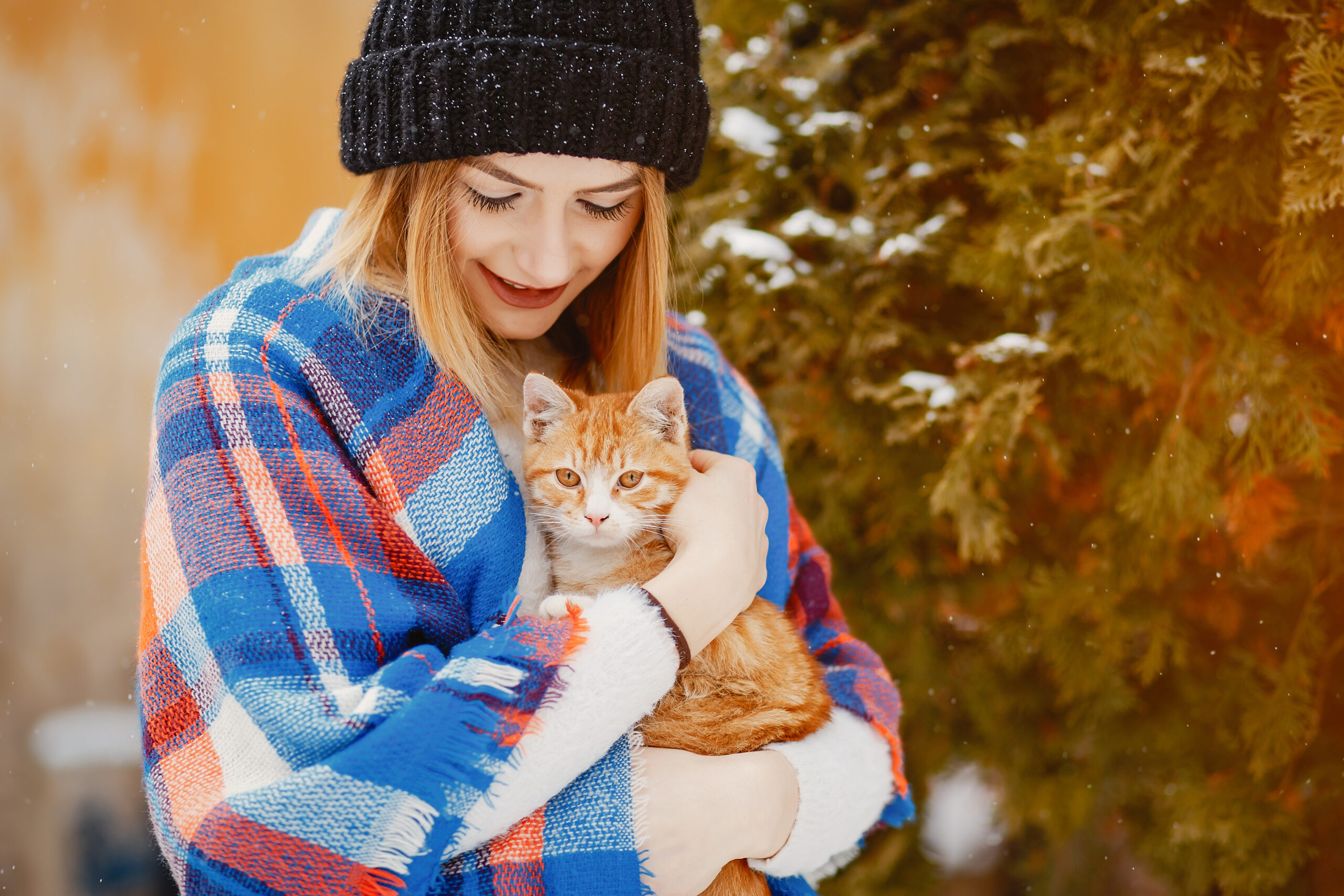❄️ Why Winter Pet Care Matters
When the temperature drops, pets are just as vulnerable to the cold as humans. While some animals have thick fur coats, they still need extra protection during freezing conditions. Understanding how to keep your pets warm during winter is essential for their comfort, health, and safety.
🏠 Create a Warm Indoor Space
1. Designate a Cozy Sleeping Area
Choose a quiet, draft-free room in your home where your pet can sleep comfortably. Use insulated beds or heated pet mats, and avoid placing them near cold windows or doors.
2. Use Blankets and Bedding
Provide soft blankets or thermal bedding. Layering helps retain heat, especially for senior pets or short-haired breeds.
3. Keep the Floor Warm
Hardwood or tile floors can get very cold. Place rugs or carpets in your pet’s favorite resting spots to provide insulation.
🐶 Dress Your Pet in Warm Clothing
1. Sweaters for Dogs and Cats
Not all pets tolerate clothes, but many benefit from a warm sweater, especially short-haired or older animals. Ensure the fit is snug but not too tight.
2. Booties for Outdoor Walks
Protect your dog’s paws from ice, snow, and harmful salt with booties. If your pet resists wearing them, apply paw wax as a protective barrier.
🚶♀️ Modify Outdoor Time
1. Limit Exposure to the Cold
Keep walks shorter in freezing temperatures. Choose midday outings when it’s warmer, and avoid windy or wet conditions.
2. Wipe Paws After Walks
After coming indoors, clean your pet’s paws to remove ice, salt, and de-icing chemicals. These substances can irritate skin or be toxic if licked.
🍲 Focus on Nutrition and Hydration
1. Increase Caloric Intake (If Necessary)
Pets burn more energy in cold weather to stay warm. Consult your vet about adjusting their diet, especially for active outdoor pets.
2. Provide Fresh, Unfrozen Water
Ensure water bowls aren’t frozen. Use a heated bowl or refresh the water frequently to keep it drinkable.
🔥 Be Mindful of Heat Sources
1. Use Pet-Safe Heating Options
Heated pet beds and pads are great, but always monitor for overheating or damage. Avoid electric heaters near unsupervised pets.
2. Avoid Fire Hazards
Keep pets away from open flames, fireplaces, and candles. Cats and dogs can easily knock things over or get burned.
🧓 Special Care for Senior Pets

Older pets often have joint issues or reduced immunity. Provide extra padding in their beds, and consider using pet-safe heating pads. Regular vet checkups can help manage arthritis or cold-triggered conditions.
🐰 Don’t Forget Small or Exotic Pets
1. Rabbits and Guinea Pigs
Keep cages away from cold windows and floors. Add extra hay and bedding for insulation.
2. Reptiles
Maintain proper tank temperatures with reliable heaters and thermostats. Cold temperatures can be life-threatening for cold-blooded pets.
🚨 Signs Your Pet Is Too Cold
Watch for these warning signs:
- Shivering or trembling
- Whining or anxiety
- Lethargy or weakness
- Cold ears, tail, or paws
- Refusal to move or go outside
If you notice these symptoms, bring your pet indoors immediately and contact your vet if needed.
✅ Final Tips to Keep Your Pet Warm
- Keep pets indoors as much as possible.
- Groom regularly to ensure a healthy, insulated coat.
- Never leave pets in cars during winter—temperatures can drop quickly.
- Stay alert to weather alerts and plan your pet’s activities accordingly.
Conclusion
Keeping your pets warm during winter isn’t just about comfort—it’s about their health and safety. With a few simple precautions, you can ensure your furry (or scaly) friend stays cozy all season long. Always tailor your care routine to your pet’s specific needs and consult your vet for personalized advice.
